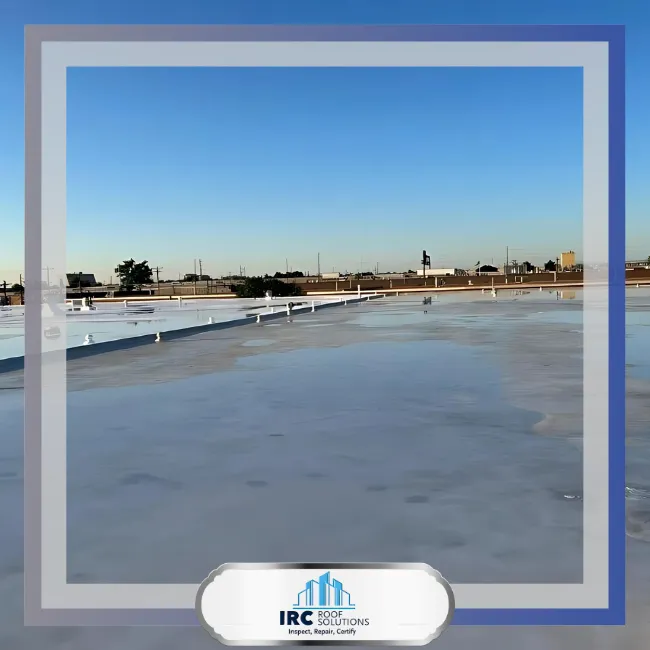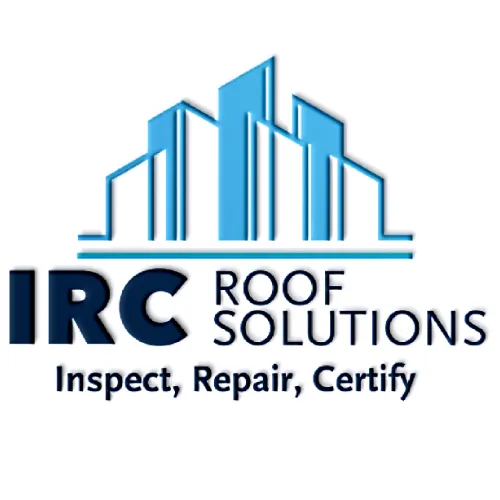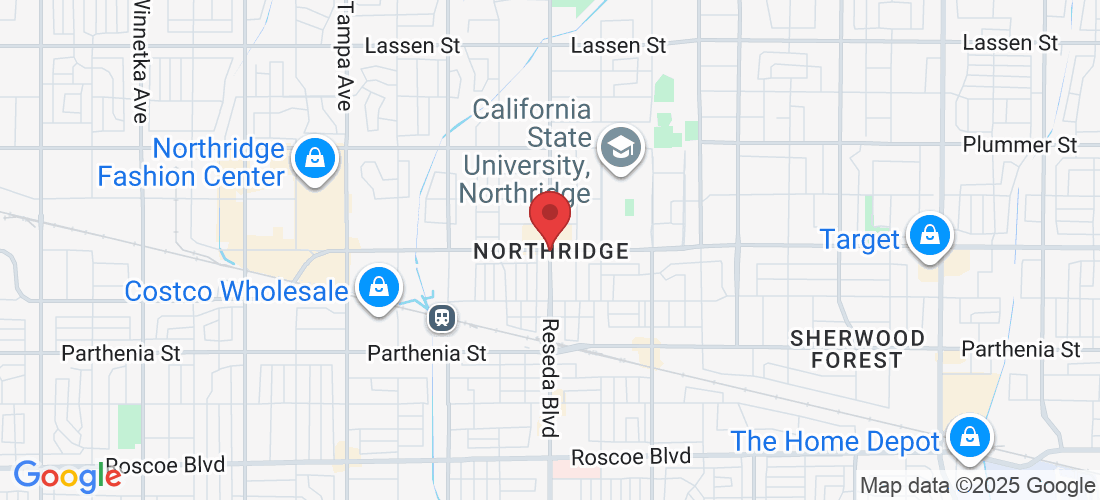Sponsored





Commercial Roof Repair in Northridge, CA
Trusted Solutions To Protect Your Business Investment
Keep your business safe and operational with expert commercial roof repair from Northridge’s top professionals. From leak detection to structural fixes, these specialists provide prompt, reliable service with minimal disruption to your operations. Browse our directory to quickly connect with experienced commercial roofing contractors in Northridge today.
Commercial Roof Repair - Northridge - Why Hire a Professional Commercial Roof Repair Service
Protecting Your Business Investment with Expert Roofing Solutions
Understanding the Importance of Commercial Roof Repair
In the bustling business community of Northridge, commercial roof repair is not just a maintenance task — it’s a critical investment in your property’s longevity and safety. A commercial roof serves as the first line of defense against the elements, protecting your assets, employees, and customers. Whether it’s a retail storefront, warehouse, or office building, the structural integrity of the roof plays a direct role in the daily operations of a business.
Many property owners underestimate the complexity of commercial roofing systems. These roofs are often larger, more intricate, and built to accommodate heavy HVAC systems or other equipment. When damage occurs, it’s not just an inconvenience — it can disrupt business, cause inventory loss, and lead to costly interior repairs. That’s why hiring a professional commercial roof repair service in Northridge is vital for prompt, effective, and lasting results.
Commercial roof issues can range from minor leaks and punctures to significant structural damage. Left unchecked, even small problems can escalate into major expenses. Professional repair ensures that the issue is addressed at its source and not just patched temporarily.
Why Professional Commercial Roof Repair in Northridge is Essential
Northridge’s climate presents unique challenges for commercial roofs. With hot summers, occasional heavy rains, and the risk of seismic activity, roofing systems must be durable and properly maintained. Professional commercial roofers are trained to identify vulnerabilities that untrained eyes might miss, preventing future problems.
A professional roofing contractor understands local building codes, safety regulations, and the best materials suited for Northridge’s environment. They bring the right tools, safety equipment, and industry knowledge to complete repairs efficiently without compromising quality.
Additionally, commercial roofing specialists provide warranties for their work. This means your investment is protected, and any issues that arise post-repair are addressed without additional unexpected costs.
Most importantly, professional repairs help maintain your building’s insurance coverage. Many policies require that repairs be conducted by licensed contractors to remain valid in the event of a claim.
Key Benefits of Hiring a Professional Commercial Roof Repair Service
One of the main advantages of professional commercial roof repair in Northridge is accurate damage assessment. Roofers conduct thorough inspections to locate not only visible issues but also hidden damage that could compromise the structure.
Professional contractors also have access to high-quality materials that ensure repairs last. Whether it’s replacing damaged membranes, sealing leaks, or reinforcing structural supports, the work is done to meet industry standards.
Safety is another critical benefit. Commercial roof repair often involves working at significant heights and handling heavy equipment. Professionals are trained in OSHA-compliant safety practices, minimizing the risk of workplace accidents.
In addition, professional services often include preventive maintenance plans. These programs help identify and address minor issues before they escalate, saving your business money over time.
Long-Term Value and Cost Savings
Some business owners are tempted to delay roof repairs or hire the cheapest contractor available. Unfortunately, cutting corners in commercial roof repair can lead to recurring problems, more extensive damage, and higher costs in the future.
Hiring a professional commercial roof repair service in Northridge ensures that the job is done right the first time. This extends the lifespan of your roof, protects your property’s value, and reduces the likelihood of emergency repairs.
Energy efficiency is another consideration. Properly repaired roofs can improve insulation and reduce cooling costs during the summer months — a significant benefit in the Northridge climate.
Ultimately, professional commercial roof repair is about safeguarding your investment, ensuring business continuity, and providing peace of mind that your property is in capable hands.
Your Trusted Roofing Experts

Google: 4.9 stars
Commercial Roofing, Roof Repair, Roof Maintenance, Roof Coating, Emergency Roofing Services
(818) 571-7892
Santa Clarita, CA 91350
Website: www.ircroofs.com





Elite Roofing Company Los Angeles
19441 Business Ctr Dr UNIT 112, Northridge, CA 91324
Roofing Contractor
Phone: (877) 834-1885
Hours: Open 24 hours Sat; Mon-Sun, 8 AM - 9 PM
Northridge Roofing Masters
18860 Nordhoff St #66, Northridge, CA 91324
Roofing Contractor
Phone: (818) 740-6050
Hours: Daily, 5 AM - 10 PM
Peak Roofing Services
9275 Corbin Ave #9275, Northridge, CA 91324
Roofing Contractor
Phone: (818) 527-9043
Hours: Daily, 5 AM - 10 PM
Quality Roofing & Maintenance
18710 Bryant St, Northridge, CA 91324
Roofing Contractor
Phone: (818) 701-5037
Hours: Mon-Fri, 7 AM - 5 PM; Sat, 9 AM - 12 PM; Closed Sun
People Also Ask
Determining whether a roof needs repair or replacement depends on age, extent of damage, and overall system performance. Localized issues—such as a few membrane punctures, open seams, or isolated flashing failures—are typically strong candidates for targeted repair. Widespread problems like chronic ponding, saturated insulation across large areas, systemic blistering, or membrane shrinkage may indicate a declining system that is more cost‑effective to replace. A thorough moisture survey, core sample, and visual inspection help evaluate the condition of the membrane, insulation, and deck. Factoring in warranty status, code requirements, energy performance, and life‑cycle costs gives a clearer picture. If a roof still has significant service life and sound underlying components, strategic repairs paired with maintenance can safely extend its lifespan.
Most leaks originate at details rather than in open field membrane. Typical sources include failed flashing at curbs and parapets, loose counter‑flashing, open seams, compromised terminations, and punctures from foot traffic or dropped tools. Ponding water accelerates deterioration and can find pathways through defects, especially around scuppers and drains. Aging sealants at penetrations, UV exposure, thermal movement, and wind uplift also contribute to vulnerabilities. HVAC work and other trades sometimes damage the membrane or block drainage unintentionally. Regular inspections that focus on high‑risk details, prompt removal of debris, and protection walk pads around service paths reduce leak risk significantly. Addressing small issues quickly prevents moisture from reaching insulation and deck components, where repairs become more complex and costly.
A repair‑focused inspection documents current conditions and pinpoints root causes. Technicians typically review historical leak reports, then assess roof access, safety, and drainage layout. They examine membrane seams, terminations, flashings, penetrations, and edge details; check for punctures, blisters, wrinkles, or shrinkage; and verify slope to drains. Moisture detection may involve infrared scanning, electrical impedance testing, or strategic core samples to confirm saturation. Drains, scuppers, and strainers are cleared and evaluated. Findings are photographed and mapped to a roof plan, with prioritized recommendations distinguishing immediate leak stops from preventive work. The deliverable should outline materials, methods, and warranty implications, giving clear options for urgent repairs, follow‑up maintenance, and any capital planning for sections nearing end of life.
Repairs depend on the membrane type and manufacturer guidance. For TPO and PVC, technicians clean and prepare the surface, then heat‑weld compatible membrane patches with proper overlap and probe seams for continuity. EPDM repairs often use priming and pressure‑sensitive or liquid‑applied flashing products, ensuring edges are rolled and sealed. Modified bitumen repairs may involve cutting out damaged sections, drying the substrate, and installing new cap‑sheet patches with torch or cold‑process adhesives. Across all systems, detail work at penetrations and terminations is critical, as is verifying dry, sound insulation and substrate. High‑quality primers, cleaners, and patch materials matched to the existing system help ensure durability, while final inspection confirms adhesion, watertightness, and warranty compliance where applicable.
Issues that allow water intrusion or trap moisture should be prioritized promptly. Ponding lasting more than 48 hours after rainfall can accelerate membrane degradation, increase live load, and indicate inadequate slope or blocked drains—these conditions warrant quick correction. Blisters that are stable and dry may be monitored, but blisters that open, grow, or occur in high‑traffic areas are candidates for repair. Open seams or flashing separations present direct leak paths and should be sealed immediately. Timely action keeps moisture from saturating insulation and corroding the deck, which complicates repairs and drives costs. A simple rule: repair defects before the next significant weather event, and schedule follow‑up inspections to verify performance.
Warranty terms vary, but using approved materials and methods is essential to maintain coverage. Many manufacturers require repairs to be performed by qualified personnel, with documentation and photos. Unapproved adhesives, incompatible patches, or alterations to drainage and edge details can jeopardize warranty status. Regarding code compliance, repairs must not reduce fire, wind, or energy performance below applicable standards. When replacing wet insulation or large sections, additional requirements—such as thermal insulation values or edge metal design—may apply. The safest approach is to confirm system type, review current warranty terms, and align repair specifications with manufacturer and code guidance. Proper documentation helps preserve coverage and demonstrates due diligence during future audits or resale.
Weather has a direct effect on adhesives, primers, and welding quality. Cold temperatures can slow cure rates and reduce tack, requiring extended dwell times or winter‑grade products. High heat speeds curing but may demand careful handling to prevent flashing slump or over‑welding. Humidity and dew can interfere with adhesion, so surfaces must be dry and clean. Contractors often schedule detail work during optimal windows and may use temporary dry‑in measures if rain threatens. Planning around forecasted conditions, allowing proper curing, and performing adhesion tests help ensure long‑term performance. When conditions are marginal, short‑term leak stops can bridge to permanent repairs once temperatures and moisture levels improve.
Preventive maintenance focuses on drainage, detail integrity, and documentation. Semiannual inspections—often in spring and fall—plus checks after major storms catch small issues early. Clearing debris from drains and gutters, resecuring loose edge metal, touching up sealants, and repairing minor punctures protect the system’s weakest points. Walk pads at service routes reduce membrane wear from foot traffic. Maintaining a roof log with photos, repair records, and warranty information streamlines decision‑making and helps demonstrate proper care. Training on rooftop etiquette for all trades further reduces accidental damage. A modest, planned maintenance budget typically costs far less than emergency leak response and extends service life for the entire assembly.
Repair pricing reflects scope, access, and materials. Contractors assess the size and complexity of affected areas, number of details, and whether insulation or deck replacement is required. Building height, perimeter conditions, crane or elevator access, and safety provisions influence labor. System‑specific materials—membranes, primers, adhesives, and metals—are matched to the existing roof to ensure compatibility. Mobilization, moisture testing, and temporary protection may be included. Transparent proposals itemize tasks and clarify exclusions, allowing owners to compare approaches rather than just totals. While costs vary, well‑scoped repairs that address root causes generally deliver better value than repeated temporary fixes that leave underlying issues unresolved.
Effective planning keeps businesses operating smoothly during roof work. Crews can stage materials to maintain clear access, coordinate noisy tasks outside sensitive hours, and sequence repairs to protect entryways and loading areas. Interior protection—such as poly sheeting over critical equipment—and clear communication with occupants reduce risk and surprises. Odor‑sensitive areas may benefit from low‑VOC products or additional ventilation. For facilities with strict protocols, pre‑task plans, safety orientations, and escort procedures help align expectations. A single onsite contact for daily updates ensures quick responses to changing conditions. With a coordinated plan, most leak repairs can be executed safely and efficiently while normal operations continue.
Northridge: A Community Rich in Culture and Opportunity
Exploring the Heart of the San Fernando Valley
Northridge, located in the San Fernando Valley of Los Angeles, is a vibrant community known for its rich culture, diverse population, and strong educational institutions. With its beautiful neighborhoods, parks, and thriving local businesses, Northridge is a desirable place to live and work. In this article, we will delve into what makes Northridge a unique community and discuss the importance of supporting local businesses, particularly in commercial roofing.
Northridge's history dates back to the early 20th century, and it was originally an agricultural area before evolving into a suburban neighborhood. The community has grown significantly over the decades, with an influx of residents seeking the balance of urban amenities and suburban charm. Today, Northridge is known for its family-friendly atmosphere and strong sense of community.
One of Northridge's key features is its strategic location. It offers easy access to major highways and public transportation, making it convenient for residents to commute to nearby areas, including downtown Los Angeles. This accessibility has attracted many families and professionals to the area, contributing to its growth and development.
The economy of Northridge is diverse, with various industries represented, including education, healthcare, retail, and entertainment. California State University, Northridge (CSUN), is one of the largest employers in the area and plays a significant role in the local economy. The university not only provides job opportunities but also enriches the community through cultural and educational events.
Northridge is also home to a variety of local businesses, ranging from unique boutiques to restaurants and professional services. These businesses contribute to the character of the community and provide essential services to residents. Supporting local businesses fosters economic growth and helps create a vibrant community atmosphere.
Community events play a vital role in bringing residents together. The Northridge Farmers Market, held weekly, is a popular gathering spot where residents can purchase fresh produce and locally-made products. Additionally, various cultural festivals and events throughout the year celebrate the diversity of the community and encourage engagement among residents.
Northridge also prioritizes education, with a strong emphasis on providing quality schooling options for families. The Los Angeles Unified School District serves the area, offering numerous public schools that focus on academic excellence and personal growth. The presence of CSUN further enhances educational opportunities for residents of all ages.
As a community that values sustainability, Northridge is committed to preserving its natural environment. The city has implemented various initiatives aimed at promoting eco-friendly practices, such as recycling programs and water conservation efforts. Local businesses are encouraged to adopt sustainable practices, contributing to a healthier community.
The real estate market in Northridge is robust, with a variety of housing options available. From charming single-family homes to modern condominiums, the area appeals to a wide range of residents. As the community grows, so does the demand for commercial spaces, providing opportunities for new businesses to thrive.
Local businesses play a crucial role in the community’s economy. They not only provide jobs but also contribute to the local culture and identity of Northridge. Residents are encouraged to support these businesses by shopping locally and participating in community events.
As Northridge continues to grow, maintaining commercial properties is essential. One critical aspect of property maintenance is commercial roofing. A well-maintained roof protects businesses from weather-related damage and ensures the safety of employees and customers.
The climate in Northridge presents unique challenges for commercial roofing. With hot summers and occasional heavy rainfall, business owners must invest in durable roofing solutions to protect their investments. Local roofing contractors are well-equipped to handle these challenges, providing tailored services that meet the specific needs of Northridge businesses.
Partnering with local roofing experts offers business owners personalized service and valuable knowledge of the area’s specific roofing requirements. Regular maintenance and inspections are vital in preventing costly repairs and ensuring roofs remain in optimal condition.
In conclusion, Northridge, California, is a thriving community characterized by its rich culture, strong educational institutions, and diverse economy. As the city continues to evolve, the importance of supporting local businesses and maintaining commercial properties—especially roofing—becomes increasingly vital. Investing in quality roofing solutions not only protects business investments but also contributes to the overall health and vitality of the Northridge community.
References: Wikipedia


